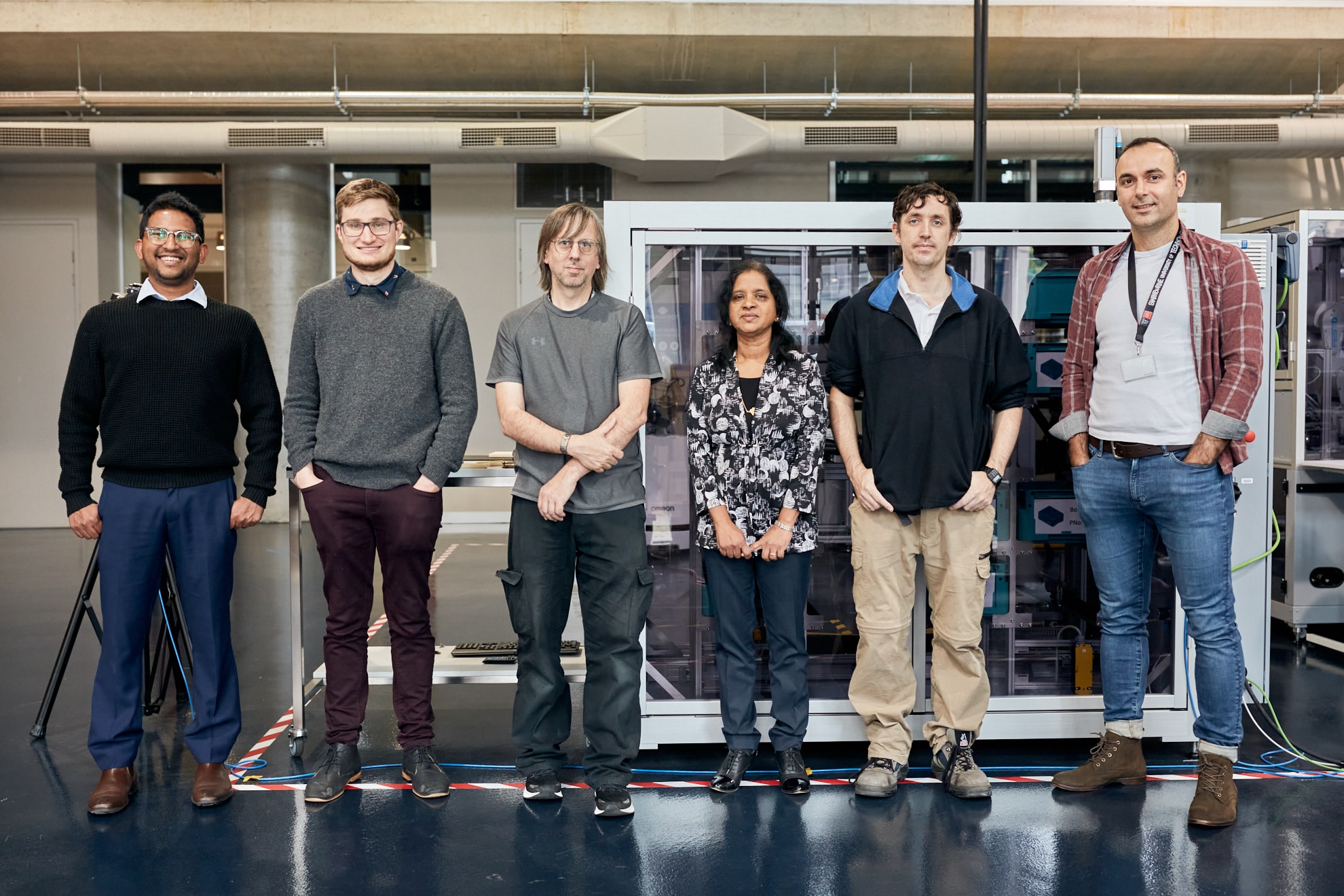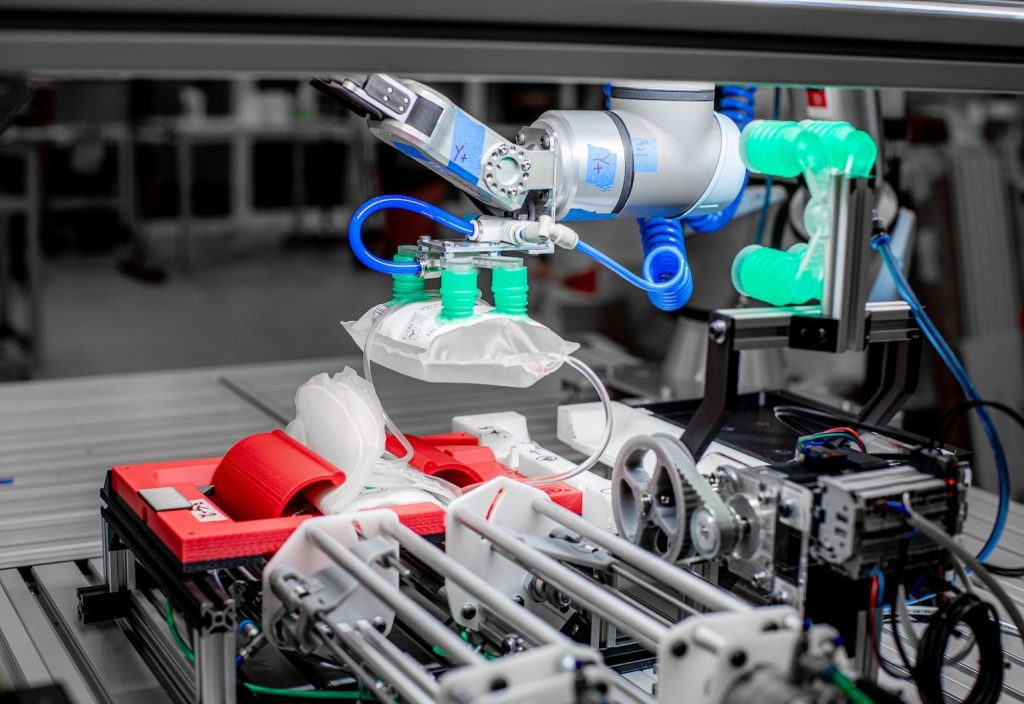Researchers at Swinburne University of Technology have created an automation system for processing blood packs, saving workers from this time intensive and often risky task.
Australians make around 1.5 million blood donations each year — but for workers in blood processing centres, collecting these critical donations is a manual and time-consuming process.
That’s because blood donations must be separated into its cellular components via a technique called centrifugation. In order to do this, the blood pack must be folded in a particular way to ensure there is no bacterial contamination — which, in turn, increases shelf life.
A project led by Deputy Director of Swinburne University’s Factory of the Future, Dr Shanti Krishnan, has built a robotic arm that automates the folding and centrifuge-tube loading process using collaborative robotics, vision systems, jigs and actuators.
“Traditionally, folding of blood packs is a human operation requiring tactile manipulation,” she told create. “It was very interesting for us to use applied research and explore automation of the folding of soft and deformable blood packs.”
Krishnan’s team was approached by an industry partner looking to solve the ergonomic problem for workers in blood processing.
“Folding and assembly of bags has to be performed in a prescribed way. Currently the folding process and assembly process is manual, leading to significant repetitive strain injuries in workers, variable quality outcomes, and difficulties in meeting regulatory compliance targets,” she said.
One of the first steps in a blood processing centre involves separation of whole blood into its cellular components, such as plasma and red blood cells. The separation occurs in a centrifuge, where a critical step in this process is to fold the PVC blood packs in a configuration suitable for the centrifuge.
“We are looking at approximately 100 hand movements for each folding process,” she said.
“A typical blood processing centre currently would process about 800 whole blood donations per day. Whole blood donations are collected in blood packs. These blood packs are connected to additional bags and filters via a tubing system, which enables closed loop processing of blood.”
The challenge? Robots handling deformable objects
The researchers believed that by breaking down the process into smaller steps, and building in design and engineering contingencies, they could find a way for the final design to involve automated or assisted processes.
“The unique challenges were for the robots to manipulate soft, deformable objects, handle blood packs of different volumes, as well as blood bags of different sizes,” she said. “Then they need to be able to read manually placed stickers in different orientations and have the ability to constrain the connecting tubes.”
Deformable objects have infinite degrees of freedom and myriad ways of positioning themselves, which has traditionally made them almost impossible for robotic manipulation.
“We need to simplify this problem by discretisation — reducing the degrees of freedom to a finite number,” she said. “To handle the complex non-linear dynamic systems of soft deformable objects, sophisticated modelling techniques and control approaches are being pursued. They involve artificial intelligence concepts such as expert systems, fuzzy logic and neural networks. All of these are computationally expensive and time consuming.
“Our proposed solution was to design a work cell in which the operator would place bags and packs in the purpose designed tray. Automated and collaborative robots carried out the prescriptive folding and assembly of blood bags and packs to meet centrifuge requirements.”

All in the design
The researchers followed an iterative design approach to assist reliable and repeatable robotic folding through purpose built jigs, fixtures and folding mechanisms.
“We used smart vision systems for finding the proper placement for the blood packs and bags,” Krishnan said. “We also used image recognition for quality inspection, data recording for traceability, and anomaly detection for manually placed stickers and labels.”
According to Krishnan, on an average, Australian blood processing centres process approximately 15,300 whole blood donations each week. Given all processing centres have almost identical laboratory setups, the results from this project can be used in processing centres around the world.
“I believe this project could have a significant impact on the global blood processing industry,” she said. “This technology can be customised and applied in the food, textile, aged care and manufacturing industries.”
